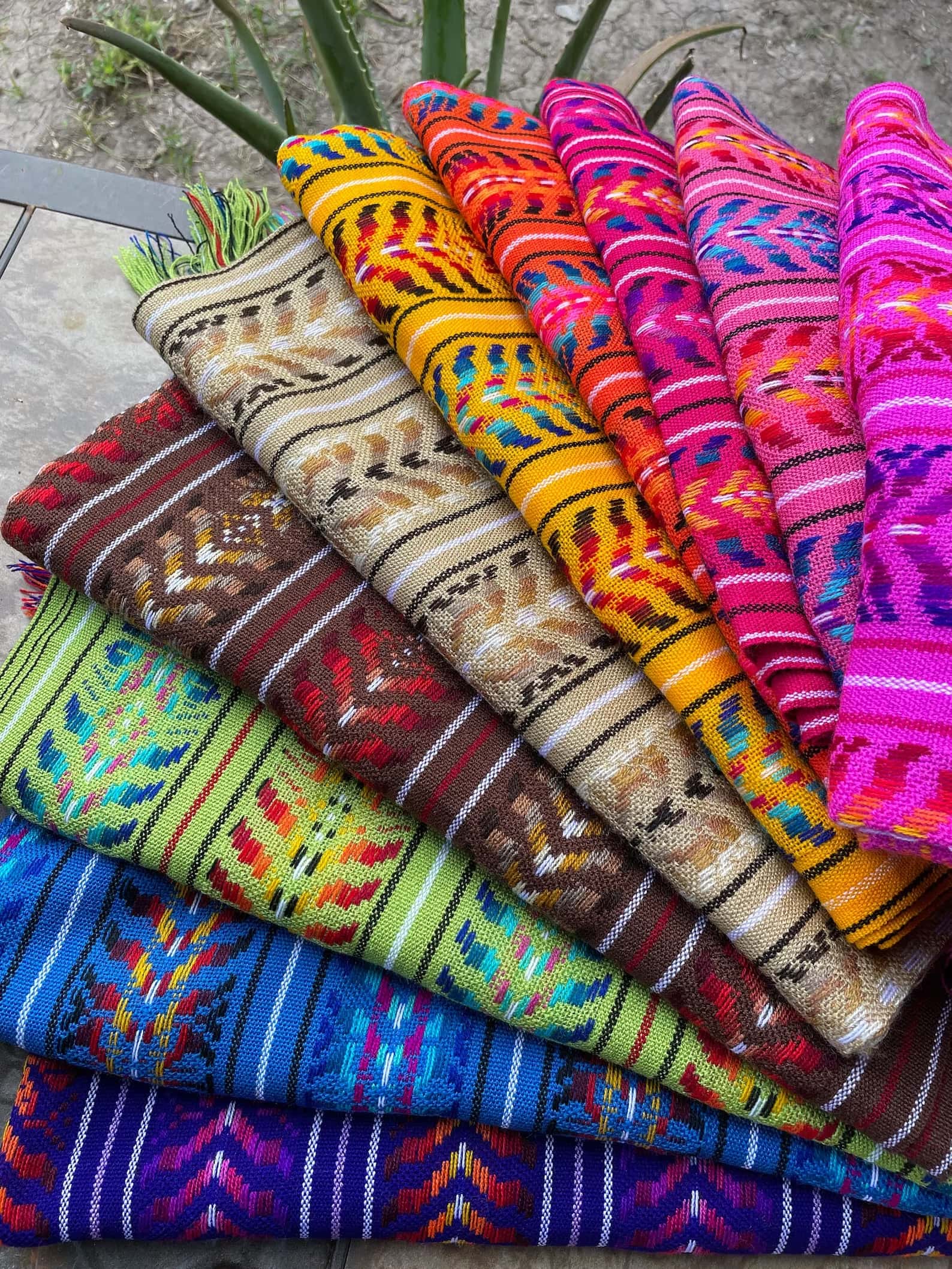
![]()

Women have many options for coping with pregnancy discomforts and labor pain — there isn’t one right way to have a baby. Understanding all the available tools and options can empower you to make the best choices for you and your baby. Pain management options include massages, counter pressure, TENS units, epidurals, and breathing techniques. But one of the oldest tools is gaining attention — the rebozo.
Quick Contents
What Is a Rebozo?

The rebozo is a unique woven cloth like a scarf or wrap. These special wraps originated in Latin America and have been around for generations. Mexico has a long tradition of using these beautiful pieces of cloth for pregnancy and daily life. In Mexico, the rebozo, or Mexican shawl, is used as clothing or to carry babies. Women also use it to carry heavy loads on their heads.4 Traditional Mexican midwives use the Mexican shawl before, during, and after birth.1
Rebozos come in many beautiful colors and materials. Initially, they were made from 100% cotton, but now they are sometimes made of other materials. They start at about 4 ½ feet long and come in different sizes. For pregnancy or labor, they should be long enough to wrap around your body and overlap. The scarf should have texture so it doesn’t slip.4
The rebozo for labor involves a midwife or support person, like a doula, using the scarf to gently move a women’s abdomen, hips, or buttocks while standing, lying down, or on hands and knees. It is used this way before and during labor.1
Rebozos are used during pregnancy and labor by less than 2% of women planning to have a vaginal birth.1 It is one of many options if you plan on medication-free labor. But it can also be helpful if you have medications and other interventions.7
Benefits of Using a Rebozo
Even though there is limited research on rebozo use during pregnancy and labor, many women have given positive feedback about using it. Midwives also claim the benefits for labor. Possible benefits include:1,2,3
- Reduced labor pain
- Increase in contractions
- Shorter labor
- Promotes natural birth
- Decreases the use of oxytocin
- Involves your partner and promotes teamwork
- Encourages your baby to descend in your pelvis
- Encourages your baby to get in the correct position for birth
- Increases psychological support
- Decreases anxiety
How To Wear a Rebozo
How you wear a rebozo depends on how you plan to use it. You can fold it lengthwise during pregnancy and wrap it snuggly under your pregnant belly. Some women like to wrap it around their hips as well. You then tie the scarf together on the side or bottom.
The cloth is usually used as a sling to wrap around your belly, hips, or buttocks during labor. You can even wear it to carry your baby after they are born. Some women also wear wraps around their heads and necks in labor for comfort.
Rebozo for Pregnancy
A rebozo scarf can be worn around or under your abdomen and hips during pregnancy to provide extra support. The additional support can help with pregnancy discomforts such as back pain. It may also help with round ligament pain. Your round ligaments run up the sides of your abdomen and get stretched during pregnancy, sometimes causing sharp and painful spasms.4
At the end of pregnancy, a wrap may help to get your baby into your pelvis if they are still floating up high. It can be beneficial for someone who has had a lot of babies and has weak abdominal muscles.2
Techniques for Labor
Wrapping a rebozo around a laboring belly and moving it in different ways may help to move a baby into the correct position and down into the pelvis.5 Always check with your doctor or midwife to ensure that using a shawl in this way is safe for your situation.
Sifting, or “manteada,” involves a rhythmic jiggling of the pregnant abdomen or pelvis with a wrap. Gentle sifting with the cloth may relax tight abdominal muscles, ligaments, and fascia.5 Fascia is thin connective tissue that holds your organs and muscles in place.6 Sifting may also help your baby to rotate into a good position for birth.5
To do rebozo sifting, you get on your hands and knees, and the scarf will wrap around your belly like a sling. Your midwife or support person will hold the ends of the wrap and jiggle or “sift” it from side to side.5 One person can do the sifting, but it is easier with two people, each taking an end of the scarf.
Another way to do sifting is to wrap the scarf across the hips or buttocks and gently shake it back and forth. This technique relaxes your pelvic floor muscles.5 The mother can lie down, lean on a wall, or be on her hands and knees for this type of sifting.
The wrap can also be used for the pushing stage of labor. Hold onto both ends of the wrap while your partner or other support person holds it in the middle. Then, pull on the cloth while you bear down and push. This technique can help you focus your pushing efforts on the right muscles. It is beneficial if you have an epidural and have little sensation to push.8
Rebozo for Postpartum
Good news! You can also use your rebozo after your baby is born. You can wear it around your belly for support in a similar way as you did during pregnancy. This support often feels good as your body adjusts to giving birth and returns to pre-pregnancy shape.
You can also use a rebozo to wear your baby by wrapping it around you and your child. This takes some practice and skill, so finding someone experienced to help you or watching videos is helpful. For safety, your baby must be wrapped high on your chest so you can easily lean forward and kiss them.9
A wrap is also helpful if you are uncomfortable breastfeeding in public. You can drape it over your baby and shoulder to provide privacy. In a pinch, you can even use it as a blanket for your baby.
When To Not Use It
There are a few situations when using a rebozo for sifting is not recommended:5
- If it’s painful
- If you have had recent round ligament muscle spasms
- With a placental abnormality such as an abruption
- Threat of miscarriage
The rebozo, a traditional woven scarf from Latin America, can be a valuable tool for pregnancy and labor. Its historical significance demonstrates the versatility of this ancient cloth as both a cultural staple and a midwifery tool. While scientific research on rebozo techniques is somewhat limited, its potential benefits for reducing labor pain, promoting contractions, and encouraging natural birth are worth exploring. Modern birth practices encourage holistic options. Embracing various pain management techniques can empower you to make personalized choices that support a positive childbirth experience.
